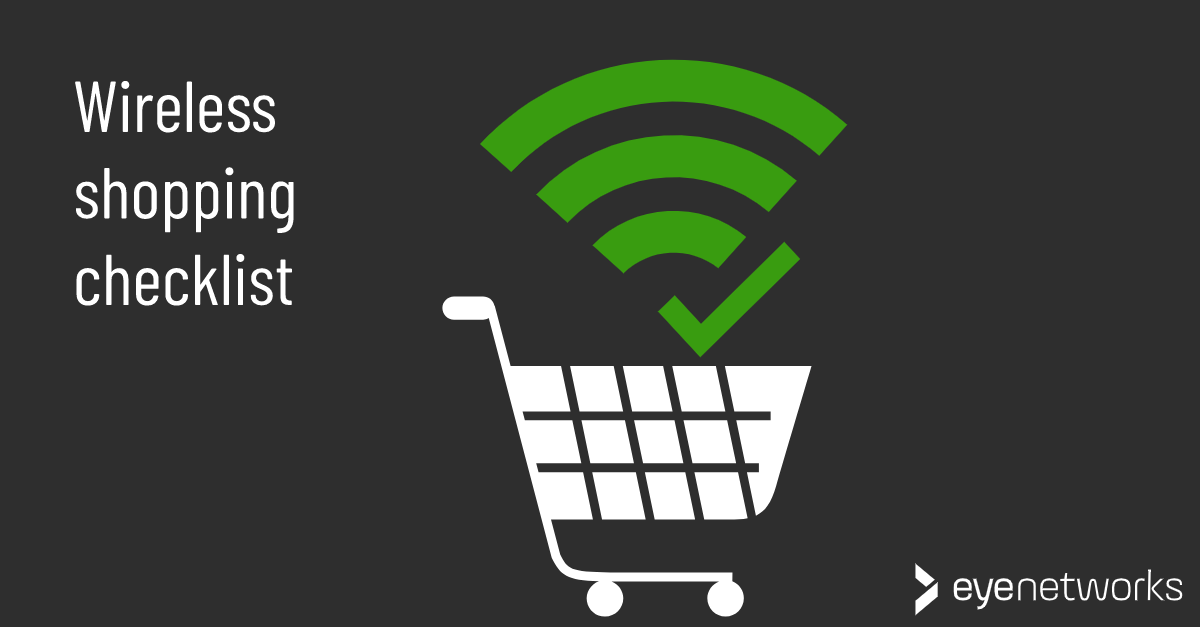Are you going to buy a new mobile? Are you considering wireless gifts? Our checklist provides you with the keywords and standards you should look for when Wi-Fi is involved.
There’s a lot to think about when buying new electronics, but if you want your new phone, PC or other device to perform well on Wi-Fi, or if you want to avoid interfering with others’ wireless networks – include this checklist in your planning.
How to Find Information
If you don’t have or can’t find information from the manufacturer about everything below, check to see whether the device you are looking at is on this list: http://clients.mikealbano.com/
The Wi-Fi standard support is located in the “. 11” column.
1. Must have on mobile and PC: Wi-Fi 7 or Wi-Fi 6 for fastest connections
The 802.11be and 802.11ax Wi-Fi standards, also known as Wi-Fi 7 and Wi-Fi 6, support the highest available speeds and many of the latest technologies. We don’t recommend buying a PC or mobile device today that doesn’t support at least Wi-Fi 6.
The vast majority of new gadgets will also be backwards compatible with the older wifi standards. This means that they can also be used with older routers and wireless networks, although it does not give as good performance as when all links are up to the latest standard.
Also check what is the maximum connection speed for your device. It should be at least:
- 433 Mbps for mobile
- 866 Mbps for computers
Do you have a smart device on your wishlist, like a wifi scale or Amazon Echo?
Many such gadgets only support Wi-Fi 4, also known as 802.11n. This also applies to DIY technology products such as Raspberry Pi and Arduino. As long as you do not expect very high speeds from the gadget, and you ensure that it is placed in the home so that it has good coverage, this is not a problem.
Pay particular attention to gadgets intended for use in the bathroom, such as smart bathroom scales, because most bathrooms have poor conditions for wifi signals. Floor heating, steel reinforcement in walls and so on can make for poor coverage.
Therefore, it is extra important to make sure that any smart devices in the bathroom do not become bad apples that ruin the network.
2. Should Have: 802.11k, r, and v for Roaming
All gadgets you will be able to move around with should support the 802.11k, r and v standards. This will provide better handling when moving between multiple access points/access points on the same network – this applies both if you have a network with multiple access points at home, such as eero or Zyxel MPro Mesh – and not least when the client is used in public networks and wireless networks at work.
You can read more about these standards and support for them in Apple iOS products here.
3. Check Which Wifi Channels Are Supported
Some Wi-Fi channels that are common and legal in Norway are prohibited in other countries – and vice versa.
For the vast majority of new products and products aimed at the Norwegian market, this is not a problem. If, however, you intend to order electronics yourself from the United States or Asia, it is advisable to pay attention.
- In Norway, we can use Wi-Fi channels 12 and 13 on the 2.4 GHz band. These channels are prohibited for private use in the United States.
- Japan and some other Asian countries have their own restrictions on some channels on the 5 GHz band. Products aimed at these markets may have difficulty using the channels supported in Europe. A complete, color-coded overview of which channels are allowed to be used in which countries can be found in this Wikipedia article about U-NII.
Sometimes this can be fixed by changing a setting — for example, you can do this with Raspberry Pi computers.
On some products there is no way to change this, which means that you must at least ensure that your own network does not use these channels. You also run the risk that the device will not work on other people’s networks if they use these channels.
Anything that supports the 802.11ac or n and 5 GHz frequency bands should also support what is called DFS (Dynamic Frequency Selection), a technology that ensures that you can use several of the channels without causing problems for, among other things, weather radars.
Again, this is most important for those ordering products directly from abroad. Beware: If a device does not support DFS, it should also not support the Wi-Fi channels from 52 and up.
What You Should Know About Other Gadgets And Wifi
Planning to buy electronics without wifi? Keep in mind that it can still affect the wireless network, and in some cases it can create a lot of noise/interference.
The biggest sinner you rarely think of is probably the microwave oven. A microwave oven that leaks can be very damaging to the surrounding wireless network.
Here you can read more about how leakage from microwave affects Wi-Fi at 2.4 GHz.
Smart light bulbs, wireless speakers such as Sonos and Bluetooth headsets are other examples of equipment that can create interference for your wireless network.
Bluetooth signals should be turned off when not in use (this will also save power).
Happy shopping!
Article by Jan Pedro Tumusok and Jorunn Danielsen
